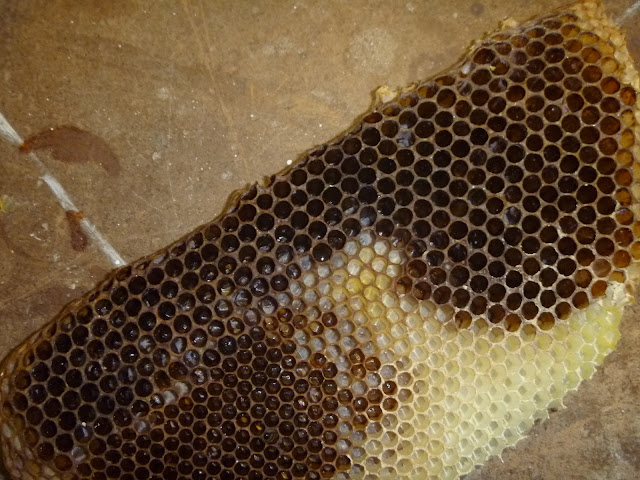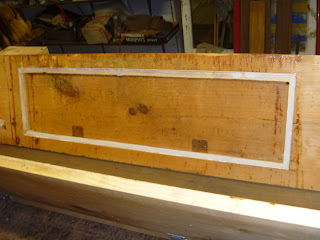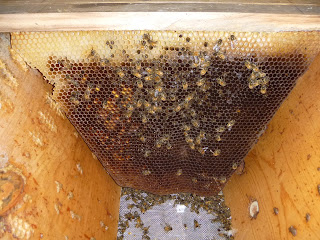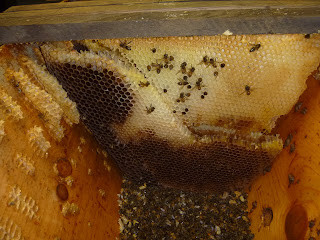Rachel picked up a load of bees on Sunday - about 2/3 of a shoebox full. Tuesday, with the warm weather, I opened again and went through the last 10 bars. Nearly all were dead - a few were moving very slowly. I brought the hive indoors and began dissecting the hive, taking photos of each bar as I went to see what I could learn. I kept them in sequence from what was the middle to one end.
I'll post those in sequence next time.
I collected and sorted through everything. I have 12 bars full of comb. Some have bees in the cells; I'm not sure whether I need to take them out or not, but I can reuse the comb in the next hive. There are also 8 bars with partial comb.
The cells are consistently 5.4 mm across. Even though they had no foundation to work from (foundation gives them a preset cell size), they still used this size. Bees naturally build to 4.9 mm, but most have been trained to the larger size. This has been done to increase the honey yield. However, I just read that this attracts varroa mites, which is one of the current major problems. Apparently, varroa is from Asia and there they like to invade drone cells, which just happen to be 5.4 mm. Going to 5.4 mm for all cells attracts them to the wrong place. Don't mess with Mother Nature...
So why did these bees build to that size? I think it's because the original group of bees from Georgia were trained that way so the first comb was built to that size. Also, they may have a genetic predisposition to do it from selective breeding. Have to check on that. As new bees came into being, I guess they just kept doing the same thing. Other beekeepers solve that problem either by retraining their bees are by purchasing bees that have been retrained.
Whatever the size, somehow the bees build nearly perfect hexagons to exactly that size. I measured 10 cells and got exactly 5.4 mm. There are patches of larger cells, probably drones, that are 6.7 mm. Drones are bigger, so the cells are bigger.
I collected about as many bees as the first time and Rachel can take them as well. I separated the hive beetles to see how many there were - a fair amount but not overwhelming.
I've also taken the hive apart and cleaned it up. I plan to add an observation window and a way to feed them.
 |
| The cells at the top and right are larger than the other cells. The smaller cells were probably not used. |















